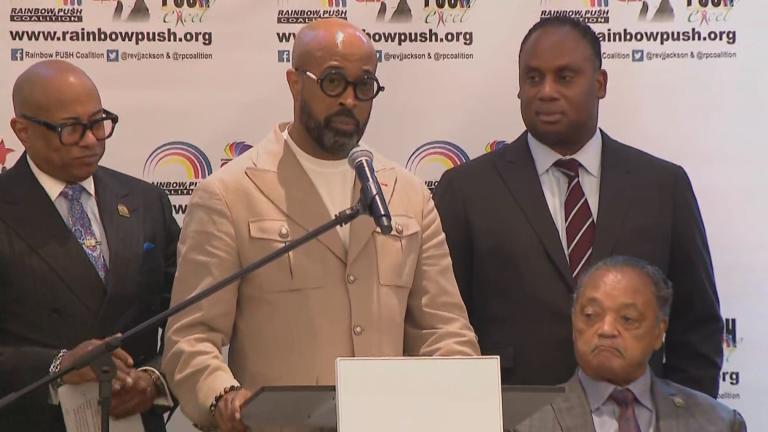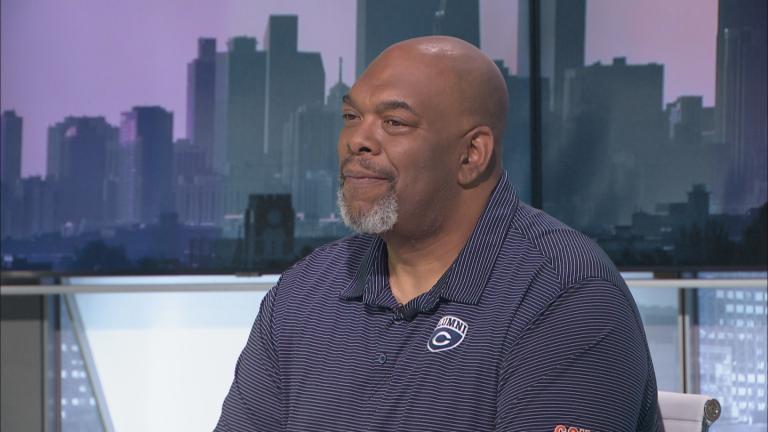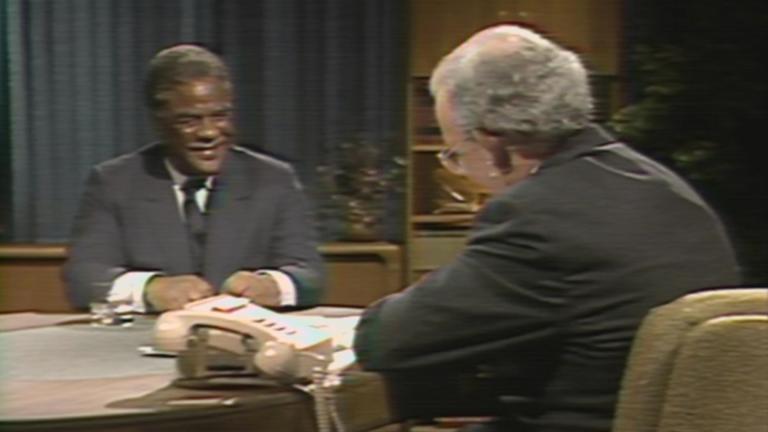More than 3,300 wrongfully convicted people have been exonerated in the U.S. since 1989. That’s according to the University of Michigan’s National Registry of Exonerations. And that time on the inside adds up to more than 30,000 years unjustly spent in prison for many of those people. A significant number of those years were spent trying to find legal representation to make a case for exoneration — a process that is complicated, difficult, and above all, lengthy.
Exoneree Terrill Swift was one of the “Englewood Four” teenagers wrongfully convicted of a 1995 rape and murder. He served 15 years before being found innocent of the crime, and he said finding representation during the time he was incarcerated was “a long battle.”
“I started my quest of writing attorneys and seeking help in 1998. I didn’t get anyone to really take my case until 2009, and I was scheduled to be released in 2010. So it was a long process,” Swift said. “Back then that was a 10-, 12-year process for me … in terms of someone trying to get help to today with a message in a bottle writing or snail mail. … It’s easier to reach out with someone with some type of technology because no one is reading letters, and some of us who have been wrongfully convicted, … some of us can’t even read and write.”
Michelle Mbekeani, senior legal and policy advisor for justice reform in the Cook County State’s Attorney’s Office, said Swift’s experience is typical of incarcerated people seeking to get back into the courtroom.
“They are relying solely on snail mail currently,” Mbekeani said. “We’re seeing that a lot of individuals who are currently incarcerated either find an attorney from word of mouth or a family member reaching out to an attorney. For those who do not have that connection to the outside, they send letters, oftentimes sending dozens, hundreds of letters, cold calling, essentially, to find an attorney to review their case. In that process, they’re writing letters telling them about their case, but often times are not informed of the information that’s necessary to, one, identify who they are in the system, … what their issue is to be addressed and how to move forward with family members on this particular issue. That takes a lot of time, a lot of staffing, and it’s very costly and time consuming for those who are incarcerated.”
With the U.S. prison population at 2.3 million, some studies estimate between 2% and 10% of inmates are wrongfully convicted. Wrongful conviction attorney Laura Nirider said given those numbers, anything that can be done to help the wrongfully incarcerated more efficiently obtain legal representation can only help.
“We can never have too many people working on the problem of wrongful convictions,” Nirider said. “We know right now of over 3,000 cases of people who have been exonerated, many losing decades of their lives, and these are folks who have sent the proverbial message in a bottle, right? Letter after letter after letter to attorneys, journalists, whomever they hope will listen. Right now, there’s about 72 innocence organizations across the planet, … many of which are staffed with two attorneys here, three attorneys there, four attorneys there, a lot of them nonprofits, some of them housed at universities. This is … a tremendously powerful, dedicated, committed group of advocates, but the numbers of lawyers out there are small and the demand unfortunately for this kind of legal representation is way too high.”
Mbekeani said it’s not just the speed of mail communication that creates obstacles for obtaining legal help.
“In the state of New York, in their prisons, you get one stamp every five days, and it can be no more than one ounce,” Mbekeani said. “So essentially, an individual incarcerated trying to get at least one person to listen to their story has six pages to put all that information in. That’s just to get your story out. I’ve heard stories of individuals incarcerated who would forego commissary and eating just to get as many letters out as possible. The other costly, and more importantly, timely task for those who are seeking to represent these individuals who have dedicated their life to representing and giving assistance to these people is just intake for those letters. We have so many compelling cases, but just to go through the meat of what’s important, that’s time away from doing the legal substantive, heavy lifting work that attorneys have to do in a time-sensitive litigation world that we live with criminal procedure law.”
Swift said that while wrongfully incarcerated people understand there many others in the same situation, it frustrated him to know the delay was caused by a scarcity of resources.
“I needed someone to hear my story and be my voice in front of this courtroom,” Swift said. “It’s just there’s not enough of them, … so they may have read my case years ago and were like, I just can’t get to it right now because … we’re just not there yet.”
Nirider said the administrative burden is indeed a factor in how quickly attorneys can act on wrongful conviction cases.
“At so many different organizations around the country, there are backlogs of hundreds if not thousands of letters, pieces of paper torn out of a notebook, handwritten letters that come in from states all across the country, sometimes from other countries,” Nirider said. “Just the mere task of sorting through that mail and being able to correspond and much less engage with the facts of every case and get to know each person as the human being that they are is an enormously daunting task for wrongful connection attorneys.”
To that end, Mbekeani has developed the Period app, a digital platform for legal correspondence that connects attorneys with people who are incarcerated. The app is currently trialing with out-of-state organizations.
“(The app helps them) find the universe of attorneys that can take on their case, inform the attorney of necessary information to assess their case and give them feedback on whether they’re going to take on the case for the attorneys, which is a huge value proposition,” Mbekeani said. “We want to help them find those clients that are trying to reach out to them in a fast manner to be informed on the information they need on their case, to review that information and respond to them in a timely manner. Essentially what (the app) does is minimizes the costly and more timely administrative intake task so we can expedite that process for them to fight for the clients.”








